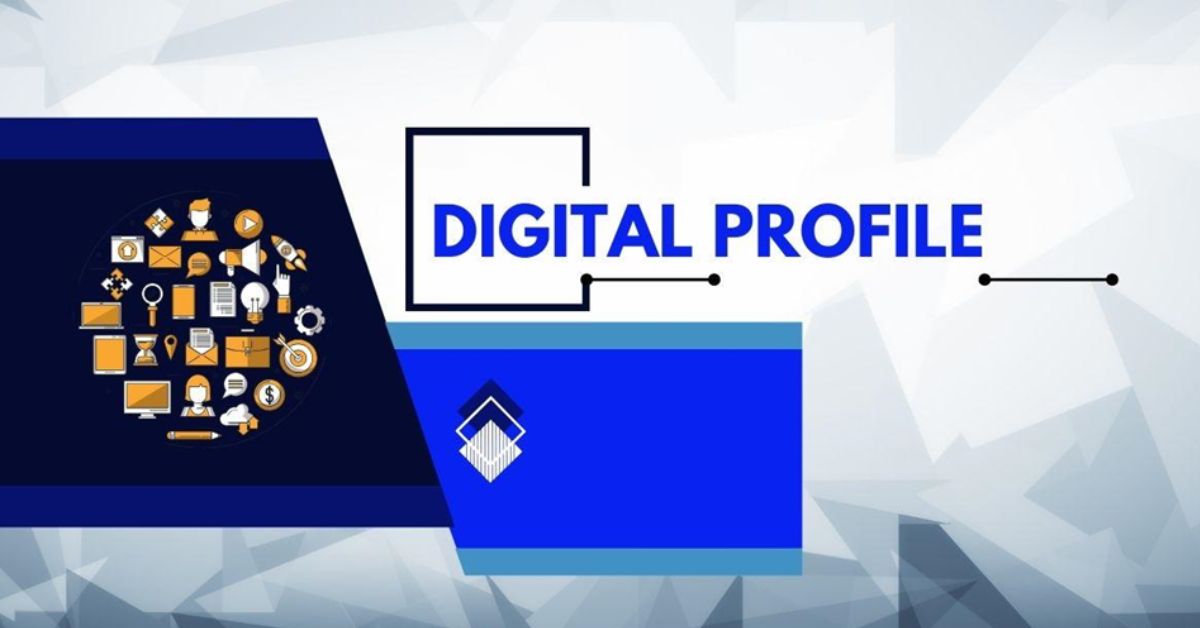BUSINESS
How Technology is Simplifying the Business Loan Process

The landscape of business financing has been significantly transformed over the past decade. Technology has played a central role in streamlining many of the traditionally cumbersome processes involved in securing a business loan. Whether you’re a small startup or an established enterprise, digital solutions are making it easier than ever to access the capital you need. From automated application systems to AI-powered loan decision-making, businesses can now navigate the loan process more efficiently and with greater transparency. Let’s explore how technology is simplifying the business loan process and what that means for the future of business financing.
The Rise of Online Lenders
In recent years, the rise of online lenders has revolutionized the way businesses approach financing. Unlike traditional banks, online lending platforms offer quick, user-friendly applications that can be completed entirely online. With the help of advanced algorithms, these lenders assess a variety of factors in real time, allowing them to offer quicker approval decisions. The process is simple: businesses can fill out an online application form, provide necessary documentation, and receive funding within a matter of days, sometimes even hours.
Online lenders have democratized access to capital, making loans available to a wider range of businesses, including startups and those with limited credit histories. Furthermore, the application process is typically more straightforward compared to traditional methods, which often require in-person visits and complex paperwork.
Automation of the Loan Application Process
One of the most significant technological advancements in the business loan process is the automation of application procedures. Traditionally, applying for a loan meant filling out extensive paperwork, submitting physical copies of financial documents, and waiting for weeks for a decision. Today, technology has automated many of these steps, reducing the time and effort required.
Many lenders now offer automated tools that can scan financial documents, extract necessary data, and generate a loan application with minimal human intervention. This process saves valuable time for both businesses and lenders, making it easier for businesses to apply for a loan and receive a decision much faster. For example, when you apply for a Tyro business loan or any other business loan, automated systems quickly process your financial data and determine eligibility based on pre-set criteria. This automation not only speeds up the loan approval process but also minimizes human error, ensuring a more efficient and reliable experience for both parties.
AI-Powered Loan Decision Making
Artificial intelligence (AI) is playing an increasingly important role in the business loan process. By utilizing machine learning algorithms, lenders can assess loan applications faster and more accurately than ever before. These AI systems analyze vast amounts of data—ranging from credit scores and financial statements to industry trends and market conditions—to determine whether a business qualifies for a loan.
AI can also predict the likelihood of a business repaying the loan, which helps lenders make better-informed decisions. This not only improves efficiency but also reduces the risk of defaults. Moreover, AI-based decision-making can lead to more personalized loan offers, as the system can adjust terms based on the unique financial circumstances of each business.
Blockchain and Transparency in Business Loans
Blockchain technology is another innovation that is transforming the business loan process. Known for its transparency and security, blockchain is being utilized to track transactions and loan agreements in a decentralized manner. This means that all parties involved in a business loan—from the lender to the borrower—can access a shared, immutable record of the loan’s details.
The use of blockchain ensures that there is no ambiguity regarding the loan’s terms and repayment schedules, and it reduces the likelihood of fraud. Additionally, businesses can benefit from quicker, more secure transactions without the need for third-party intermediaries. By simplifying the process and enhancing transparency, blockchain technology makes business loans more trustworthy and accessible.
Digital Credit Scoring Models
Traditional credit scoring models have long been criticized for being too rigid and often failing to take into account the full picture of a business’s financial health. With the advent of digital credit scoring models, businesses are now being evaluated using more comprehensive, data-driven approaches.
These models consider a wider range of factors beyond just credit history, such as cash flow, business performance, and even social media activity. This gives lenders a more accurate picture of a business’s ability to repay a loan. For businesses, it means that they may have a better chance of securing financing, even if they don’t have a long track record or a perfect credit score. As a result, more businesses can access the capital they need, thanks to these advanced digital credit scoring systems.
Mobile Applications for Instant Loan Access
Another advancement that has simplified the business loan process is the development of mobile applications for lenders. These apps allow business owners to apply for loans and manage their financing needs directly from their smartphones. With just a few taps, they can check their loan status, receive updates, and even access additional resources to help manage their business finances.
For small businesses and entrepreneurs who may not have access to a computer or prefer the convenience of using their phone, mobile apps provide an easy, flexible way to apply for loans on the go. The ability to apply for and track loans from anywhere adds to the overall efficiency of the process and is especially beneficial for businesses operating in remote areas or those that are frequently on the move.
Fintech Companies and Alternative Lending
Fintech companies have become major players in the business lending space, offering alternative lending solutions that cater to the unique needs of modern businesses. These companies leverage technology to create more flexible, accessible loan options, such as peer-to-peer lending, crowdfunding, and revenue-based financing. Fintech lenders often use non-traditional data points to assess creditworthiness, making it easier for businesses with limited credit history or those in niche industries to access funding. With shorter approval times and more innovative products, fintech companies are playing a crucial role in providing businesses with the capital they need to grow and thrive.
Speed and Efficiency of the Loan Process
Technology has drastically reduced the time it takes to process and approve business loans. In the past, loan applications could take weeks or even months to be reviewed, with long waiting periods for a decision. Today, many digital lenders can approve loans within a matter of days or even hours. This speed is particularly advantageous for businesses in need of immediate funding to address cash flow issues, seize growth opportunities, or manage unexpected expenses.
Furthermore, the efficiency of the loan process is enhanced by digital platforms that allow businesses to track their application status in real time. This transparency helps businesses stay informed and reduces the uncertainty that often accompanies traditional loan applications.
The Future of Business Loans
As technology continues to evolve, the future of business loans looks even more promising. We can expect further advancements in areas like machine learning, blockchain, and digital banking that will make the process of securing a loan even more seamless, efficient, and accessible. The growing use of digital wallets and cryptocurrency may also pave the way for new forms of business financing that were previously unimaginable.
For businesses, embracing these technological changes can open up new opportunities for growth and financial success. With fewer barriers to entry, easier access to capital, and more flexible loan options, technology is fundamentally changing the way businesses approach financing.
The integration of technology into the business loan process offers numerous advantages, from faster approvals and more personalized loan terms to enhanced transparency and security. As these innovations continue to evolve, businesses of all sizes will benefit from the increased accessibility and efficiency that technology brings to the world of business loans.
BUSINESS
The Role of a Digital Profile in Establishing Professional Credibility

In today’s competitive job market, establishing professional credibility is essential for career growth and new opportunities. Your digital profile is a key component of your reputation, serving as an online portfolio that showcases your skills, achievements, and industry expertise. A well-crafted digital presence not only enhances your visibility but also helps you build trust with potential employers, clients, and professional connections.
Why Professional Credibility Matters
Credibility is what sets professionals apart in any industry. Employers want to hire individuals who demonstrate expertise, reliability, and a commitment to their field. Clients and business partners also prefer working with professionals who have a strong reputation. By optimizing your digital profile, you can position yourself as a knowledgeable and trustworthy expert in your industry.
Building a Strong Foundation with a Complete Profile
The first step in establishing credibility is ensuring that your digital profile is complete and up-to-date. This includes:
- A professional, high-quality headshot
- A compelling headline that summarizes your expertise
- A detailed summary highlighting your career journey and unique value
- A well-structured experience section showcasing key achievements
- Endorsements and recommendations from colleagues, clients, or mentors
A well-organized profile signals that you take your professional presence seriously, making you more attractive to potential employers and business contacts.
Showcasing Thought Leadership
One of the best ways to establish credibility is by demonstrating thought leadership. This involves actively sharing insights, engaging in industry discussions, and contributing valuable content to your professional network.
To enhance your thought leadership:
- Publish articles or blog posts on industry trends, challenges, or innovations
- Share insightful comments on posts from industry leaders
- Participate in relevant discussions within professional groups
- Present case studies or success stories from past projects
By consistently providing value, you reinforce your expertise and build a reputation as a go-to professional in your field.
Leveraging Testimonials and Endorsements
Social proof plays a significant role in credibility. Endorsements from colleagues, supervisors, and clients validate your skills and achievements. Request recommendations from individuals who can speak to your strengths, and offer endorsements in return to strengthen professional relationships.
Well-written testimonials can highlight your problem-solving abilities, leadership skills, or specific accomplishments, giving potential employers or business partners more confidence in your capabilities.
Maintaining a Consistent Online Presence
Credibility is not built overnight—it requires consistency. Keeping your profile updated with recent projects, certifications, and industry involvement ensures that your online presence remains relevant.
To maintain consistency:
- Regularly update your experience and skills section
- Share new certifications, training, or achievements
- Engage with professional content and discussions at least once a week
A stagnant profile can give the impression that you are not actively engaged in your industry, while an active presence shows dedication and continuous learning.
For expert guidance on creating a professional digital profile that enhances credibility, visit Professional Profile.
About Professional Profile
Professional Profile helps professionals craft compelling digital profiles that amplify their online presence and open doors to career opportunities. Through expert advice, tools, and resources, Professional Profile empowers individuals to showcase their skills, build a personal brand, and navigate the digital landscape for career success.
BUSINESS
How Much Should I Pay for a Mini Excavator Rental?

Renting heavy machinery can be a cost-effective solution for construction, landscaping, and utility work. Mini excavators are among the most commonly rented machines due to their versatility, compact size, and ability to handle various tasks. Whether you’re a contractor working on a job site or a homeowner tackling a backyard project, renting a mini excavator can save you time and effort while keeping costs manageable.
But how much should you expect to pay for a mini excavator rental? The cost varies based on several factors, including rental duration, machine size, location, and any additional fees. In this guide, we’ll break down typical rental rates, key factors influencing pricing, and tips for getting the best deal.
What Is a Mini Excavator?
A mini excavator is a smaller version of a full-size excavator, typically weighing between 1 and 10 tons. These machines are designed for digging, trenching, lifting, and demolition in tight spaces where larger equipment would be difficult to maneuver. They are commonly used in:
- Residential and commercial construction – Digging foundations, grading land, and trenching for utility lines.
- Landscaping projects – Creating ponds, removing stumps, and installing drainage systems.
- Roadwork and site preparation – Small-scale excavation for repairs and installations.
- Demolition – Removing small structures, driveways, or concrete slabs.
Because of their compact design, mini excavators are easy to operate and transport, making them a popular choice for rental.
Average Cost to Rent a Mini Excavator
The cost of renting mini excavators varies by location, rental provider, and machine specifications. Below is a breakdown of typical rental prices:
| Rental Duration | Estimated Cost |
| Hourly | $50 – $100 per hour |
| Daily | $200 – $500 per day |
| Weekly | $800 – $2,500 per week |
| Monthly | $2,500 – $6,000 per month |
Additional Costs to Consider
While the base rental price covers the machine itself, you may encounter extra charges, including:
- Delivery and Pickup Fees – If you need the equipment delivered to your site, expect to pay an additional $100-$500 depending on distance.
- Fuel Costs – Most rental agreements require the machine to be returned with a full tank of fuel.
- Damage Waivers or Insurance – Some rental companies offer damage protection plans, which typically add 10-15% to the rental cost.
- Attachment Rentals – Additional tools such as augers, hydraulic breakers, or specialized buckets may cost $50-$200 per day.
- Operator Fees – If you require an experienced operator, expect an additional $50-$100 per hour.
Understanding these costs upfront can help you avoid unexpected expenses when renting mini excavators.
Factors That Affect Mini Excavator Rental Costs
Several factors influence the rental price of mini excavators, including machine specifications, rental duration, and geographic location. Understanding these factors can help you estimate your total cost.
1. Size and Weight of the Machine
Larger mini excavators with higher lifting and digging capacities tend to be more expensive. A 1-3 ton excavator is typically the most affordable, while a 6-10 ton model may cost significantly more to rent.
2. Rental Duration
Short-term rentals (hourly or daily) often have higher per-unit costs than weekly or monthly rentals. If you need an excavator for an extended period, a weekly or monthly rental provides better value.
3. Location
Rental prices vary by region. Urban areas with high demand tend to have higher rental rates compared to rural locations. Additionally, states with a strong construction industry may have more competitive pricing due to increased equipment availability.
4. Rental Company Policies
Different rental providers set their own pricing based on equipment availability, brand reputation, and service quality. Comparing quotes from multiple companies can help you find the best deal.
5. Seasonal Demand
The time of year can impact rental rates. During peak construction seasons (spring and summer), demand for mini excavators is higher, leading to increased rental costs.
Where to Rent a Mini Excavator
There are several options for renting mini excavators, each with its advantages.
1. Local Equipment Rental Companies
Independent rental providers may offer flexible terms and personalized service.
2. National Rental Chains
Companies like United Rentals, Sunbelt Rentals, and Herc Rentals provide a wide selection of equipment with standardized pricing and nationwide availability.
3. Dealership Rentals
Some heavy equipment dealers, such as John Deere and Caterpillar, offer rental programs for their machinery.
4. Online Rental Marketplaces
Websites like BigRentz and EquipmentShare allow renters to compare pricing from multiple suppliers.
Tips for Getting the Best Rental Price
If you’re looking to rent mini excavators while staying within budget, these tips can help:
1. Get Multiple Quotes
Compare prices from at least three rental providers to find the most competitive rate.
2. Book in Advance
Demand for equipment rentals is higher in warmer months. Reserving your rental early can help you secure lower rates.
3. Choose the Right Size
Renting a larger excavator than necessary will increase costs. Make sure you select the right size for your project.
4. Look for Promotions or Discounts
Some rental companies offer discounts for long-term rentals or repeat customers.
5. Understand the Rental Agreement
Be aware of additional fees, such as late return charges or maintenance costs.
Renting vs. Buying: Which Is the Better Option?
For businesses and individuals who frequently use mini excavators, deciding whether to rent or buy is an important financial consideration.
When Renting Is the Better Choice:
- You only need the excavator for a short-term project.
- You want to avoid maintenance and repair costs.
- You lack storage space for heavy equipment.
- You need different models for different jobs.
When Buying Is the Better Choice:
- You frequently use an excavator for ongoing projects.
- You want to invest in equipment that adds value to your business.
- You plan to customize or modify the excavator.
- You want to avoid long-term rental costs.
For most occasional users, renting is the more cost-effective option. However, businesses that require an excavator regularly may benefit from ownership.
Final Thoughts
Renting a mini excavator is a practical solution for contractors, landscapers, and homeowners who need powerful excavation equipment without the commitment of ownership. Rental costs vary based on machine size, duration, and location, with hourly rates starting at $50 and monthly rentals reaching up to $6,000.
By comparing rental providers, booking in advance, and choosing the right machine size, you can ensure you’re getting the best deal. Whether you need an excavator for a single-day project or a long-term construction job, renting provides the flexibility and affordability to complete the job efficiently.
BUSINESS
Achieve Seamless Operations with a Managed Complete Solution

In the modern business environment, efficiency isn’t merely an aspiration; it’s a requisite for survival and success. Enterprises seeking to outpace the competition and thrive in their niches must leverage every tool at their disposal. One of the most effective strategies is to implement a manage complete solution that streamlines operations and enhances productivity. This article delves into the merits of adopting such solutions for seamless business operations.
Understanding Managed Complete Solutions
A managed complete solution refers to a comprehensive service that encompasses all aspects of a company’s operations, providing support, management, and deployment of business processes and technologies. By consolidating various services under a single provider, businesses can enjoy a harmonised approach to their operations.
Optimising Business Operations
At the heart of optimising business operations is the integration of processes and tech solutions. A managed solution eases the burden on internal resources, freeing staff to focus on core business initiatives rather than getting entangled in the intricacies of multiple service providers, each with its own sets of requirements and standards.
Customised Approach to Efficiency
Every business is unique, with distinct processes, customer bases, and market challenges. A key advantage of a managed complete solution is the ability to tailor services to fit the specific needs of a company. Customisation ensures that a business isn’t just adopting new processes, but enhancing and refining existing ones for maximal efficiency.
The Benefits of a Managed Complete Solution
The move to a managed complete solution comes with a multitude of benefits. Enterprises that adopt this approach often realise substantial gains in their overall efficiency, due to a number of factors, including streamlined technology management, improved communications, and better data handling.
Centralised Communications
Communication is the lifeblood of any business operation. By centralising communication channels, businesses reduce redundancies and confusion, ensuring that information is distributed quickly and accurately. This synergy improves both internal and external communication, leading to better collaboration and higher customer satisfaction.
Cost-Effective Operations Management
Cost efficiency is another significant benefit of a managed complete solution. With a single provider handling multiple aspects of enterprise operations, there is no need to invest in disparate systems or hire specialised staff for each function. This consolidation results in reduced overheads and more predictable budgeting.
Enhanced Security and Compliance
Securing business data and ensuring compliance with various regulations can be daunting. Providers of managed complete solutions usually adhere to strict security standards and are well-versed in compliance requirements, providing businesses with peace of mind and protection against potential breaches and legal issues.
Leveraging Technology for Enhanced Productivity
Technological advancements are rapidly transforming the corporate landscape. Managed solutions embrace such technological innovations, incorporating them into the fabric of everyday business operations, which significantly enhances productivity.
Automating Routine Processes
One of the key productivity boosters is the automation of routine tasks. Automating such tasks decreases human error and allows staff to allocate more time to value-adding activities. The outcome is an upsurge in productivity and a more engaged workforce.
Agility and Scalability
Business demands can fluctuate, and a managed complete solution offers the agility and scalability required to adapt to these changes swiftly. As a company grows or contracts, the managed solution can adjust accordingly, ensuring seamless operations throughout the business cycle.
Choosing the Right Managed Complete Solution
Selecting the right managed solution provider is critical. It requires a thorough assessment of a business’s needs, objectives, and current infrastructure. Providers should offer scalable solutions that can evolve in alignment with the company’s growth trajectory.
Assessment and Consultation
Reputable managed solution providers commence with an in-depth assessment of a business’s current operations. Consultation is essential to identify inefficiencies, opportunities for improvement, and to understand the specific goals of an enterprise.
Integration and Support
Fundamental to a successful deployment is the seamless integration of the managed solution with the existing business infrastructure. Continuous support and proactive management from the provider also play vital roles in ensuring that the business operates at its peak capabilities.
Partnering for Success
Ultimately, the relationship between a business and its managed solution provider should be seen as a partnership aimed at achieving mutual success. With a shared vision and commitment to efficiency, this partnership can steer a company towards achieving a competitive edge in its industry.
Conclusion
Achieving seamless operations in today’s fast-paced business world necessitates a strategic approach where efficiency is not left to chance. A managed complete solution embodies this approach, providing a centralised, cohesive service that addresses all aspects of a business’s operations. By leveraging such solutions, businesses can not only streamline their processes but also gain the agility needed to adapt and compete in an ever-changing marketplace. The key lies in choosing a provider that understands the company’s unique needs and has the capability to deliver a truly managed solution that will drive operational excellence.
Transform Your Business Operations
For companies seeking to transform their business operations and achieve seamless efficiency, adopting a manage complete solution is the way forward. It’s about more than just technology; it’s about gaining a strategic partner dedicated to propelling the business towards new heights of operational excellence.

 Cartoon1 year ago
Cartoon1 year agoUnlocking the Potential of Nekopoi.care: A Comprehensive Guide

 Game1 year ago
Game1 year agoExploring Aopickleballthietke.com: Your Ultimate Pickleball Destination

 BUSINESS1 year ago
BUSINESS1 year agoWhat Companies Are In The Consumer Services Field

 HOME IMPROVEMENT1 year ago
HOME IMPROVEMENT1 year agoVtrahe vs. Other Platforms: Which One Reigns Supreme?

 BUSINESS11 months ago
BUSINESS11 months agoUnraveling the Mystery of 405 Howard Street San Francisco charge on Credit Card

 TECHNOLOGY11 months ago
TECHNOLOGY11 months agoThe Guide to Using Anon Vault for Secure Data Storage

 ENTERTAINMENT8 months ago
ENTERTAINMENT8 months agoUnderstanding Bunkr Album: A Comprehensive Guide

 ENTERTAINMENT1 year ago
ENTERTAINMENT1 year agoThe Epic Return: Revenge of the Iron-Blooded Sword Hound
















